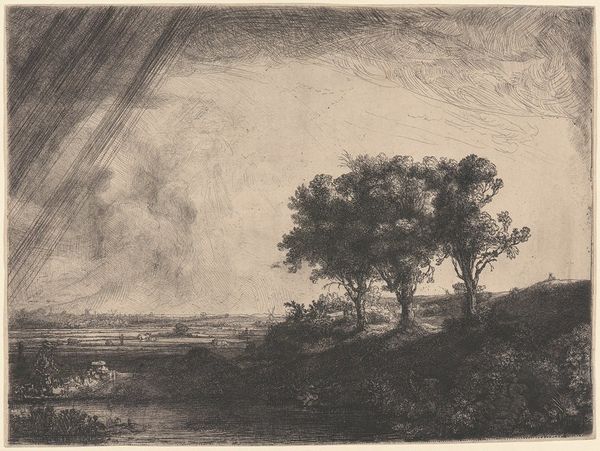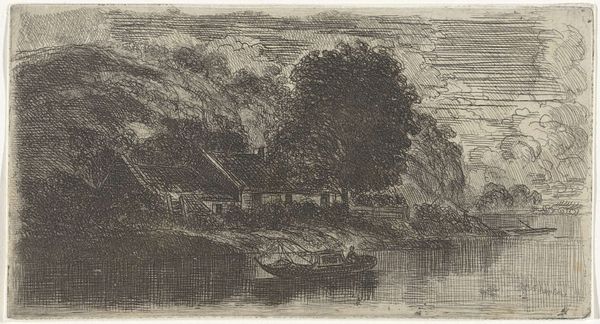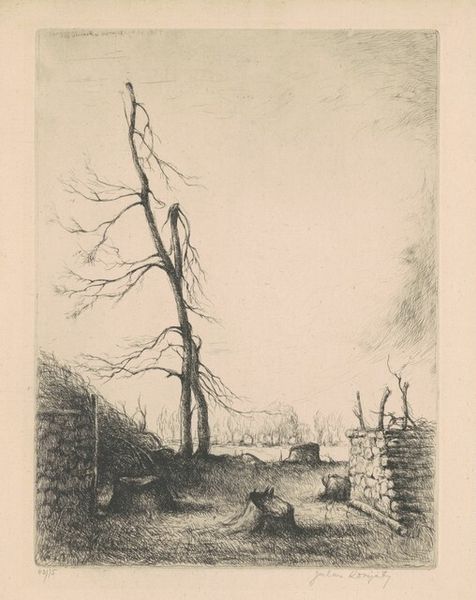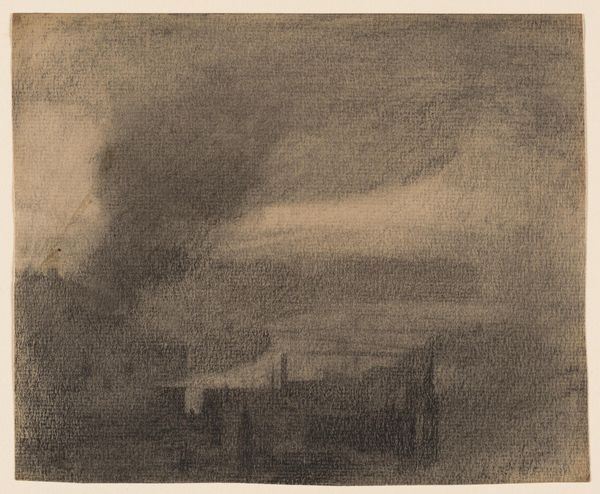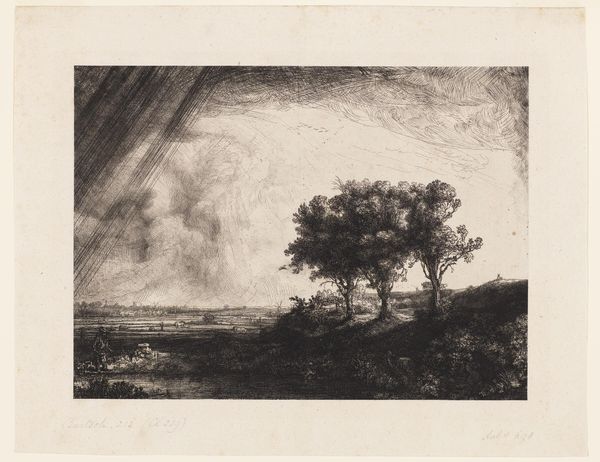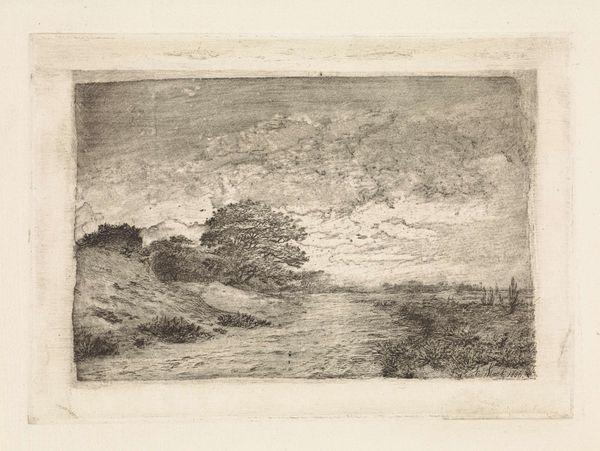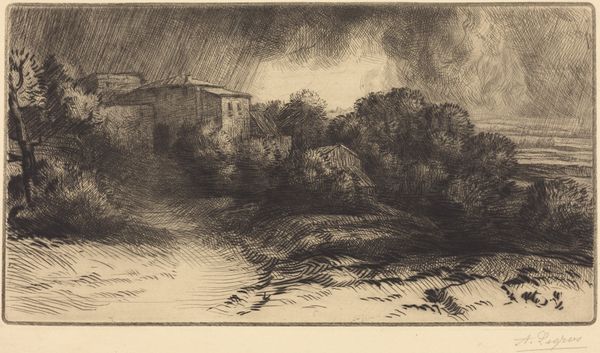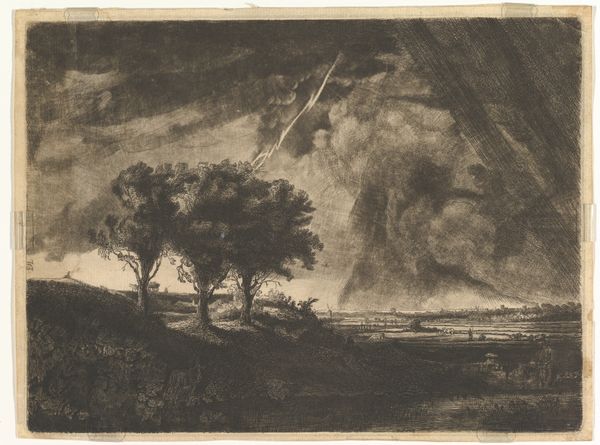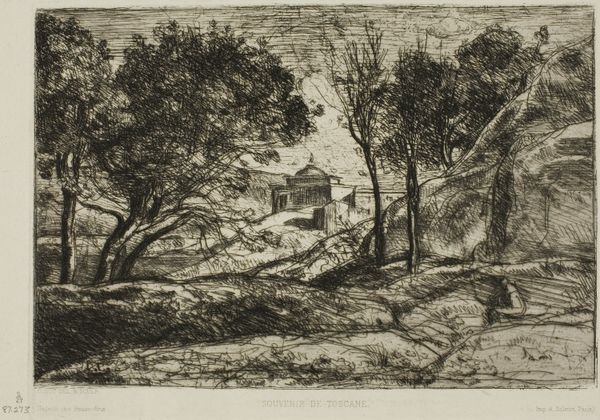
print, etching
# print
#
etching
#
landscape
#
history-painting
#
realism
Dimensions: plate: 21 x 27 cm (8 1/4 x 10 5/8 in.) sheet: 28.2 x 37 cm (11 1/8 x 14 9/16 in.)
Copyright: National Gallery of Art: CC0 1.0
Editor: We're looking at "Le Village" by Dirk Baksteen. It’s an etching print from somewhere between 1886 and 1971. I'm really struck by how bleak it is, and by the visible texture, particularly in the sky. It feels… windswept, almost oppressive. What do you make of it? Art Historian: It’s interesting that you use the word "bleak". What immediately grabs my attention is the labor involved in its creation. Look at the intricate detail achieved through the etching process. Do you see how the artist meticulously worked the metal plate to create such a rich tonal range? Editor: Yes, I see the detail in the houses, and how he scratched the plate to give it that kind of hazy effect overall. I just figured he did it to suggest a kind of dramatic, gloomy mood. Art Historian: Perhaps, but I encourage you to consider it beyond mere representation. Think about the historical context. During this period, the printmaking industry served as a powerful tool for mass production. How might "Le Village", as a printed multiple, speak to the increasing commodification of rural life and landscapes? Was it created with mass distribution in mind? Editor: That’s something I hadn’t thought of at all. I guess I saw it as a singular piece, not part of a bigger market or anything. Art Historian: The "originality" of the art object is a romantic idea. Let's consider how the production and consumption of images such as this might have impacted society’s perception and perhaps exploitation of rural landscapes. This print makes a commodity out of village life and aestheticizes it at the same time. Editor: I can see that, viewing this image of "Le Village" in its historical manufacturing and societal framework definitely takes the romance out of it for me, replacing it with socioeconomic questions of production and circulation. Art Historian: Precisely. And that’s the power of art; its material form is directly intertwined with its meaning.
Comments
No comments
Be the first to comment and join the conversation on the ultimate creative platform.
